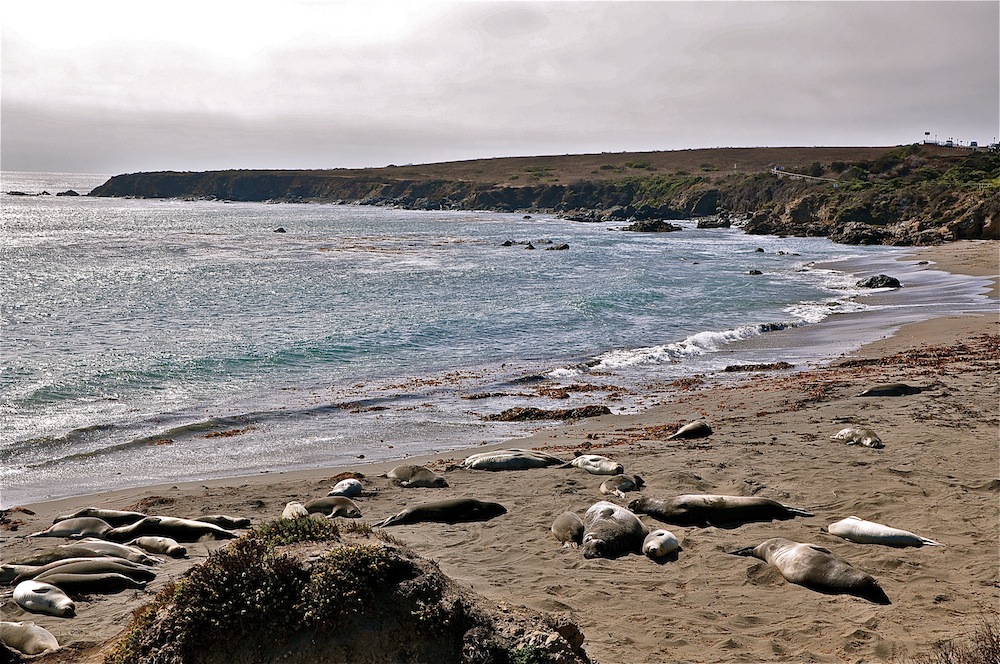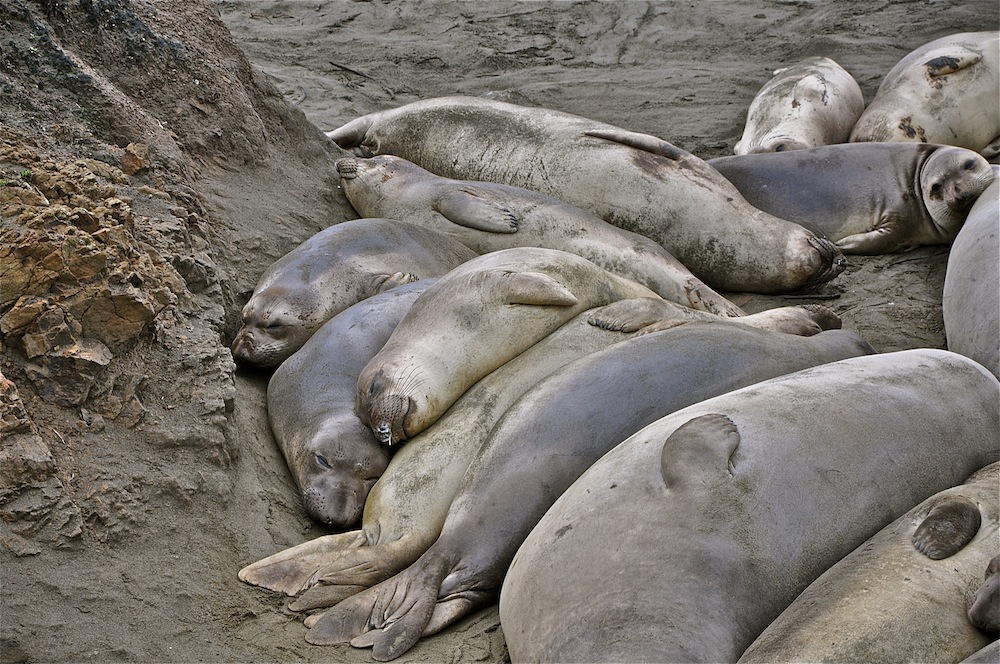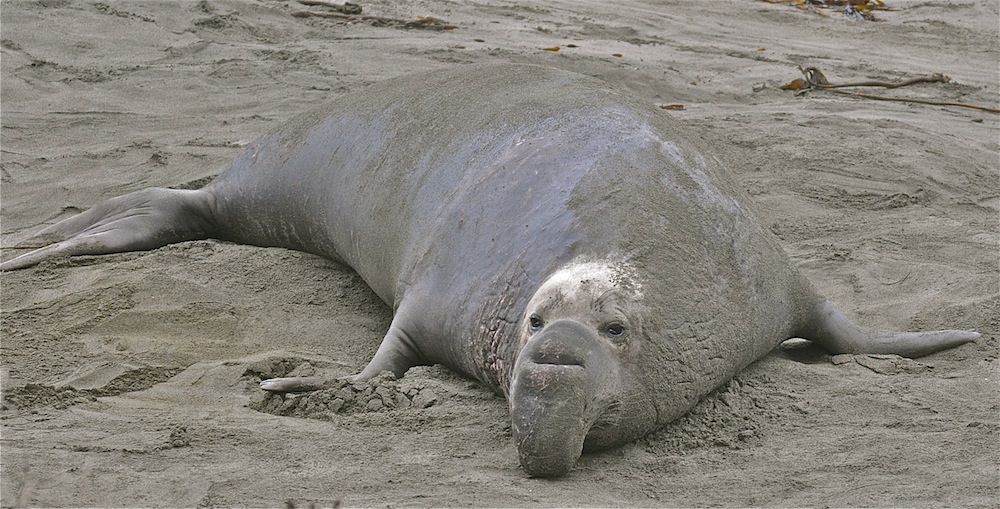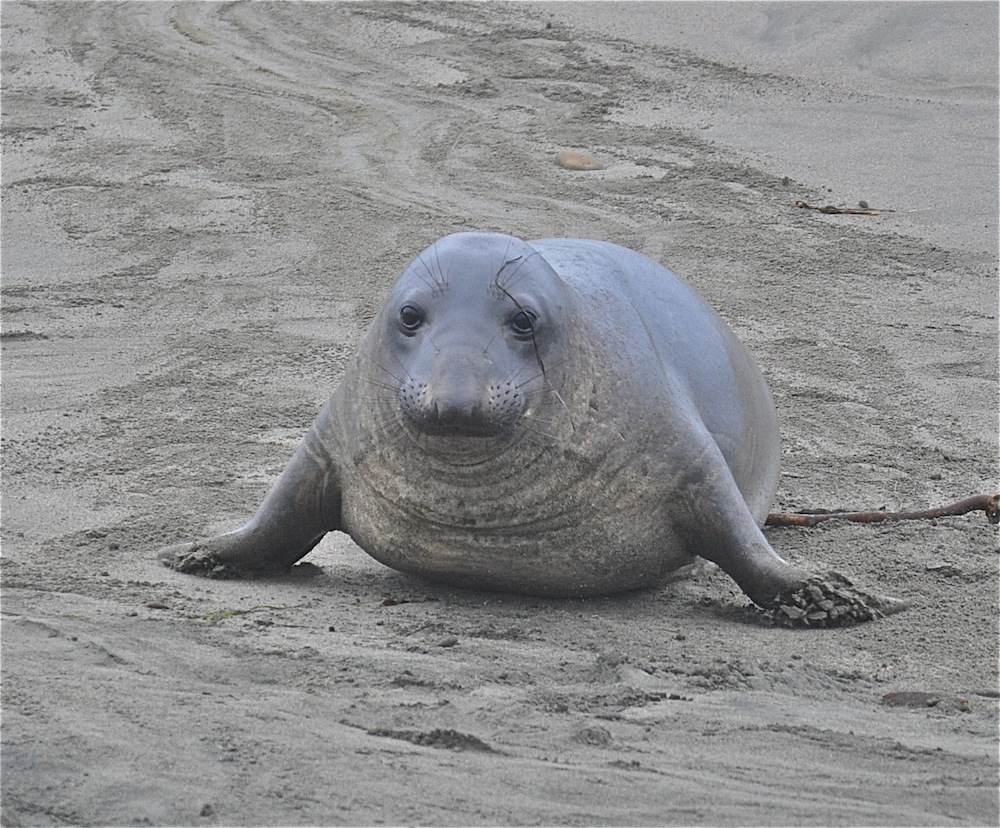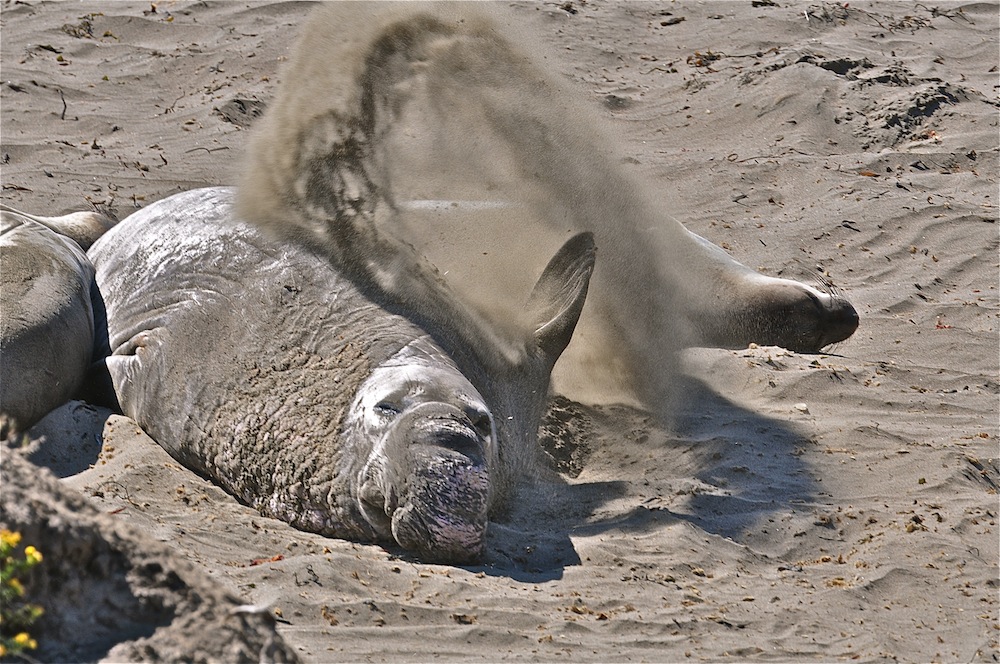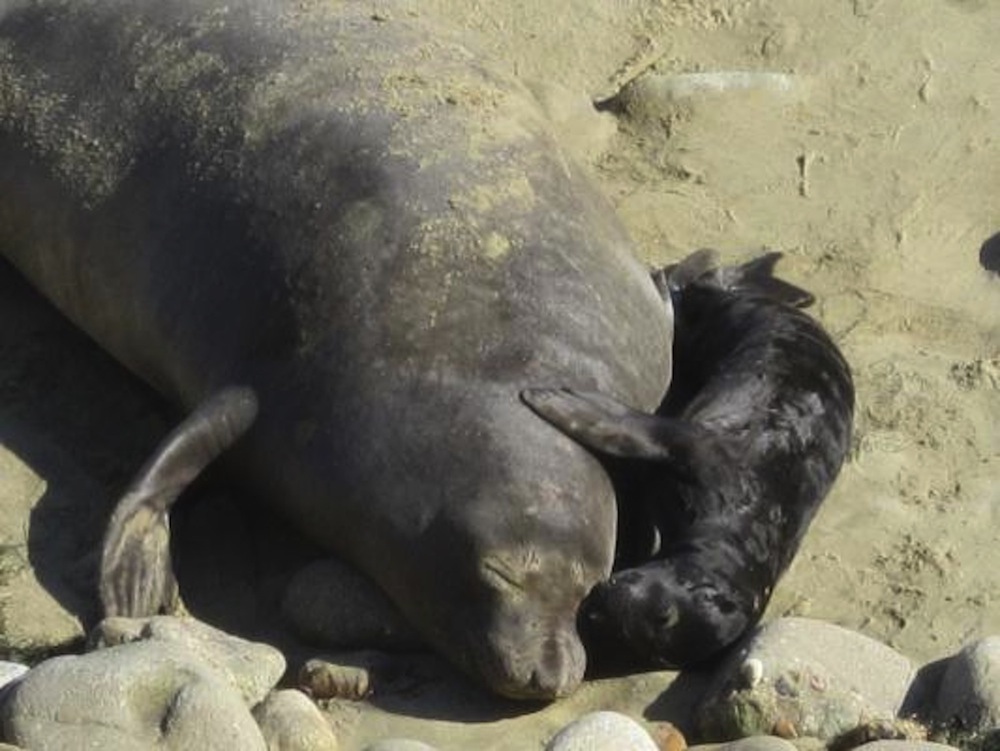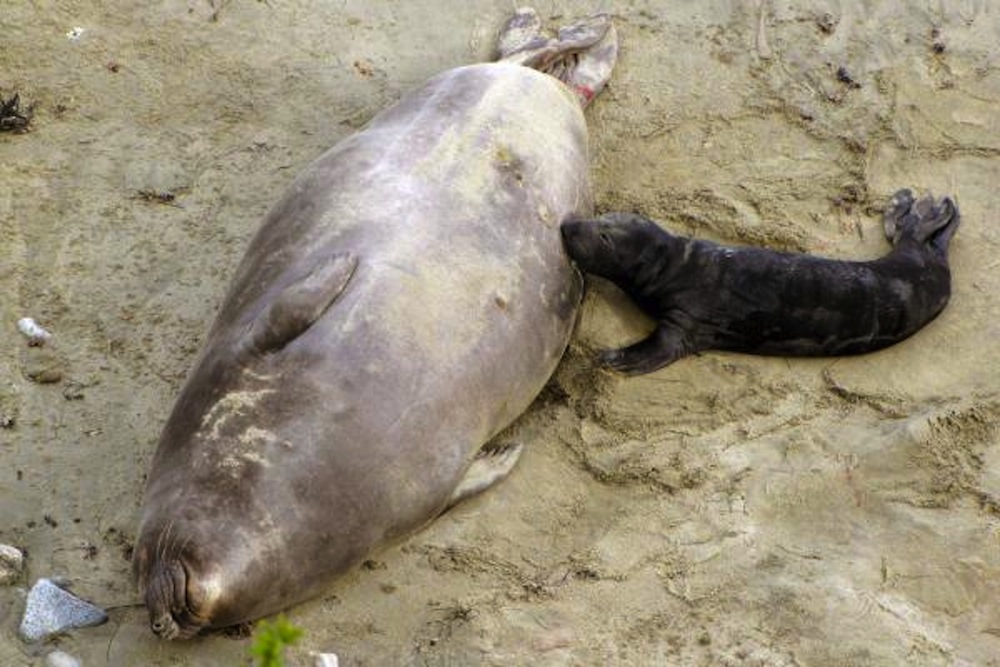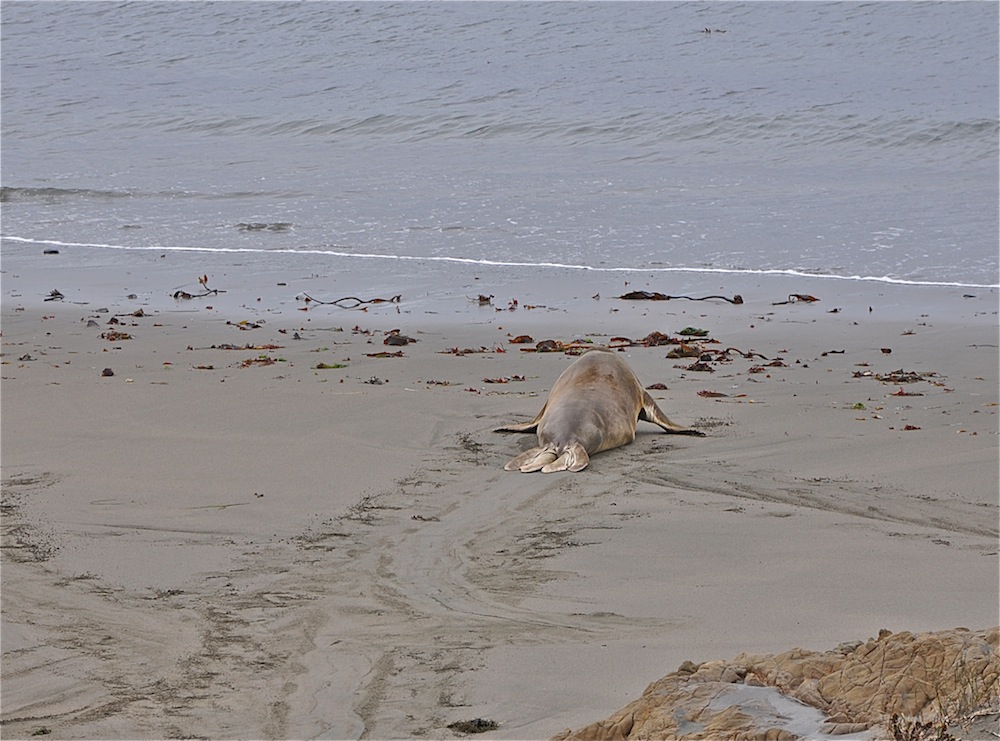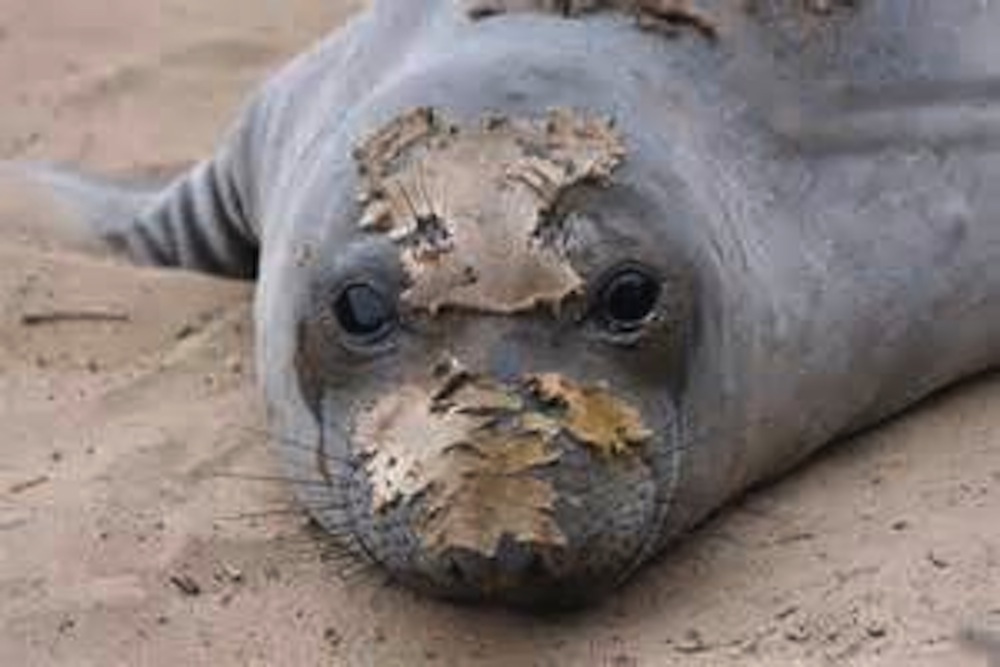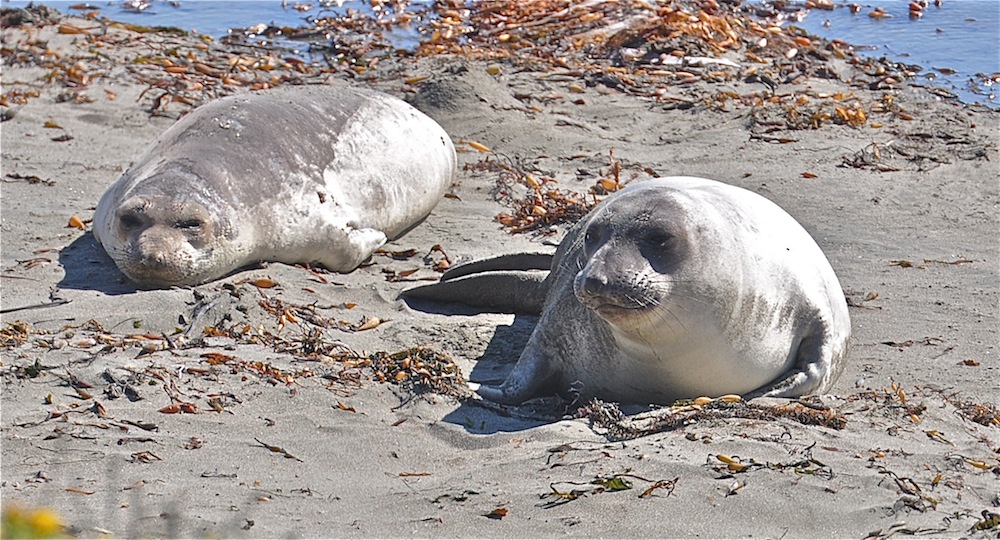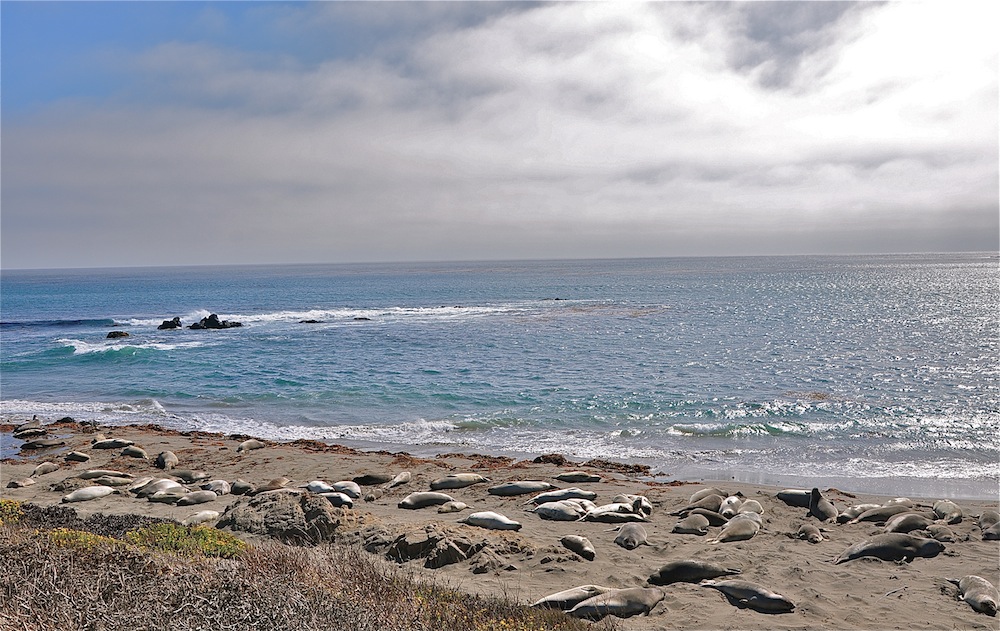Breeding Season: Incredible Photos of Northern Elephant Seals
At the Piedras Blancas Beach in north-central California, a northern elephant seal (Mirounga angustirotris) rookery has become an important sanctuary for this once-endangered species. Check out these incredible photos of northern elephant seals in the wild.
These magnificent sea mammals were hunted for their blubber oil to near extinction in the 1890s. It's estimated that only 50 to 100 animals survived on the remote Isla Guadalupe, off the coast of Baja Norte, Mexico. (Credit: Linda & Dr. Dick Buscher)
Northern elephant seals are very social while on the sands of their Pacific home beach. The Piedras Blancas Beach rookery is just one of 17 northern elephant seal rookeries found on Pacific Ocean beaches between Isla Cedros, Mexico, and Vancouver Island, Canada. The seals first began using Piedras Blancas Beach as a rookery in 1990. Since all the seals born on this beach are never on the beach at the same time, scientists can only estimate their total numbers. Their best estimate is that now more than 20,000 northern elephant seals return here twice each year to give birth and mate between November to January, and to molt and rest during the warm months of summer and early fall. (Credit: Linda & Dr. Dick Buscher)
When not on the rookery beaches, the northern elephant seals are at sea. Males swim each year to the same rich feeding areas near the Aleutian Islands, while the females return to the northeast Pacific near Hawaii. Their sea journeys will take them between 12,000 and 14,000 miles (19,300 to 22,500 kilometers), making their migration the longest of any marine mammal
Elephant seals can dive to depths of 1,000 to 2,000 feet (300 to 600 meters), and have been known to remain underwater for as long as 2 hours. During their migrations, elephant seals are solitary, most likely never seeing another members of their species along the journey. These animals feed constantly, not even stopping to sleep, and they appear to occasionally "cat-nap" below the ocean surface during their nearly 10 months at sea. (Credit: Linda & Dr. Dick Buscher)
Elephant seals are true seals; they belong to the suborder pinnipeds — fin-footed semi-aquatic sea mammals. The animals received their common name from the appearance created by the pendulous noses of the males. This snout creates a resonating chamber that can create a "trumpeting" sound that males actively use, especially during mating season, as they attempt to collect a harem of females and become one of the alpha males.
A thick, calloused-skin chest shield develops as the male matures and often becomes bloodied during aggressive combat with other males during the mating season. The males are huge, blubbery creatures, and can weigh between 3,000 to 5,000 pounds (1,300 to 2,200 kilograms) and grow to lengths of between 14 to 16 feet (4 to 5 m). (Credit: Linda & Dr. Dick Buscher)
Get the world’s most fascinating discoveries delivered straight to your inbox.
The smaller females appear to have a "sweet smile" that does not reflect their true and powerful nature. Females can weigh between 900 to 1,800 pounds (400 to 800 kg) and grow to lengths of between 8 to 12 feet (2.4 to 3.7 m). Both males and females have specialized facial hairs known as vibrissae(whiskers) that help these carnivorous mammals detect the water movement of their prey. The animals' big, brown eyes contain specialized pigments that allow the seals to see clearly in both the air and in the darkness of the deep ocean. (Credit: Linda & Dr. Dick Buscher)
Visitors to Piedras Blancas Beach are often amused by the common, sand-flipping behavior of elephant seals. The enormous amount of body blubber is designed to keep these amazing animals warm in the cold waters of the Pacific Ocean. When they are on the sand-covered beach, heat from the sun becomes a potential problem, so the sand-flipping functions as a type of natural sunscreen to help keep their large bodies cool. (Credit: Linda & Dr. Dick Buscher)
This six-mile-long (10 km) northern elephant seal rookery becomes a very noisy place during the breeding season, which typically begins in late November. Mature males fight other mature males to become one of approximately 100 alpha males that will be found up and down the length of the beach when the many females once again come into season. In addition, the symphony of sounds is composed of grunts, pups squawking to be fed, females vocalizing for prime beach location, snorts, belches and squeals, making up one of nature’s most unique and primordial scenes. (Credit: Linda & Dr. Dick Buscher)
The arrival of mature bulls on Piedras Blancas Beach in late November signals the beginning of another breeding season. Pregnant females begin arriving in mid-December and the first births begin within four to five days of the females’ arrival. Pups will continue to be born on the beach through early February. Females come back into heat about three weeks after giving birth and most often mate with one of the beach’s alpha males. Females remain on the beach for about five weeks after coming ashore, while the males will remain for as long as 100 days. Both genders do not eat while on the beach and lose about 1/3 of their body weight during the breeding season. (Credit: NPS)
Female northern elephant seals generally give birth to only one pup conceived from the previous year. Females immediately vocalize to their new pup, imprinting their unique voice pattern so that the pup and mom can locate each other on what becomes a very crowded and noisy beach. The black-skinned pups weigh between 60 to 80 pounds (27 to 36 kg) at birth and will nurse for 24 to 28 days. Elephant seal milk contains 55 percent fat and is considered the richest milk of all lactating mammals. Consuming such rich milk results in the pups growing to 250 to 350 pounds (113 to 160 kg) within a month of birth. (Credit: NPS)
Female elephant seals wean their pups by simply deserting them and abruptly returning to the sea. Weaned pups are known as "weaners" and are best described as "plump" when their mothers depart. They remain on the beach rookery, not eating for another eight to 10 weeks, learning for themselves how to swim in the shallow ocean tidal pools. During this "weaner fast," the pups will lose up to 1/3 of their body weight. Their hunger continues to grow until they too plunge into the open sea for their first feeding trip. (Credit: Linda & Dr. Dick Buscher)
Northern elephant seals, like all mammals, must replace old skin and hair. Most mammals shed year-round, but elephant seals do this in what is known as a "catastrophic molt," when their entire layer of epidermis and attached hairs are shed off over a period of several weeks. This catastrophic molt is why all the northern elephant seals born at Piedras Blancas Beach return to the beach for a second time each year to complete this important molting process. Females and juveniles return to molt in April and May, immature males return in May and June, and mature adult males return in July and August. (Credit: California Department of Parks & Recreation/CA.gov)
Elephant seals feast on a variety of small sea creatures, such as skates, ratfish, rays, squids and small sharks. Males can go without food for up to three months and females forgo eating while giving birth, nursing and mating. Females, shown here, first give birth when they are 3 or 4 years old and are known to live up to 20 years. Males reach maturity at the age of five but will not have the chance to become a dominant male of the beach until they are between 9 to 12 years old. A male’s life expectancy is only 14 years. Elephant seals’ greatest natural enemies are great white sharks (Carcharodon carcharias) and orcas (Orcinus orca). (Credit: Linda & Dr. Dick Buscher)
As late spring returns to Piedras Blancas Beach, most of the northern elephant seals have left their home beach, returning to their long migration journeys for feeding. A few always can be seen each month of the year, lounging on the beach and enjoying the safe sanctuary that Piedras Blancas Beach provides. Organizations like the Friends of the Elephant Seal watch over the Piedras Blancas Beach seals to ensure that they are safe from any negative human interaction. More information can be found at http://www.elephantseal.org/. (Credit: Linda & Dr. Dick Buscher)
Follow us @livescience, Facebook & Google+.
